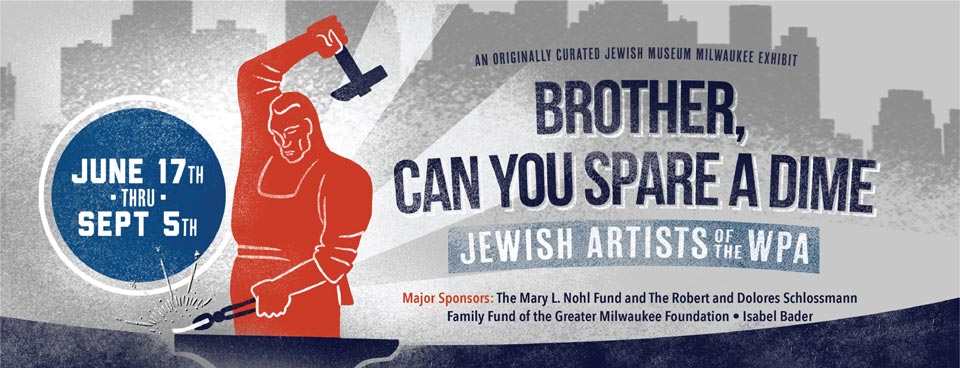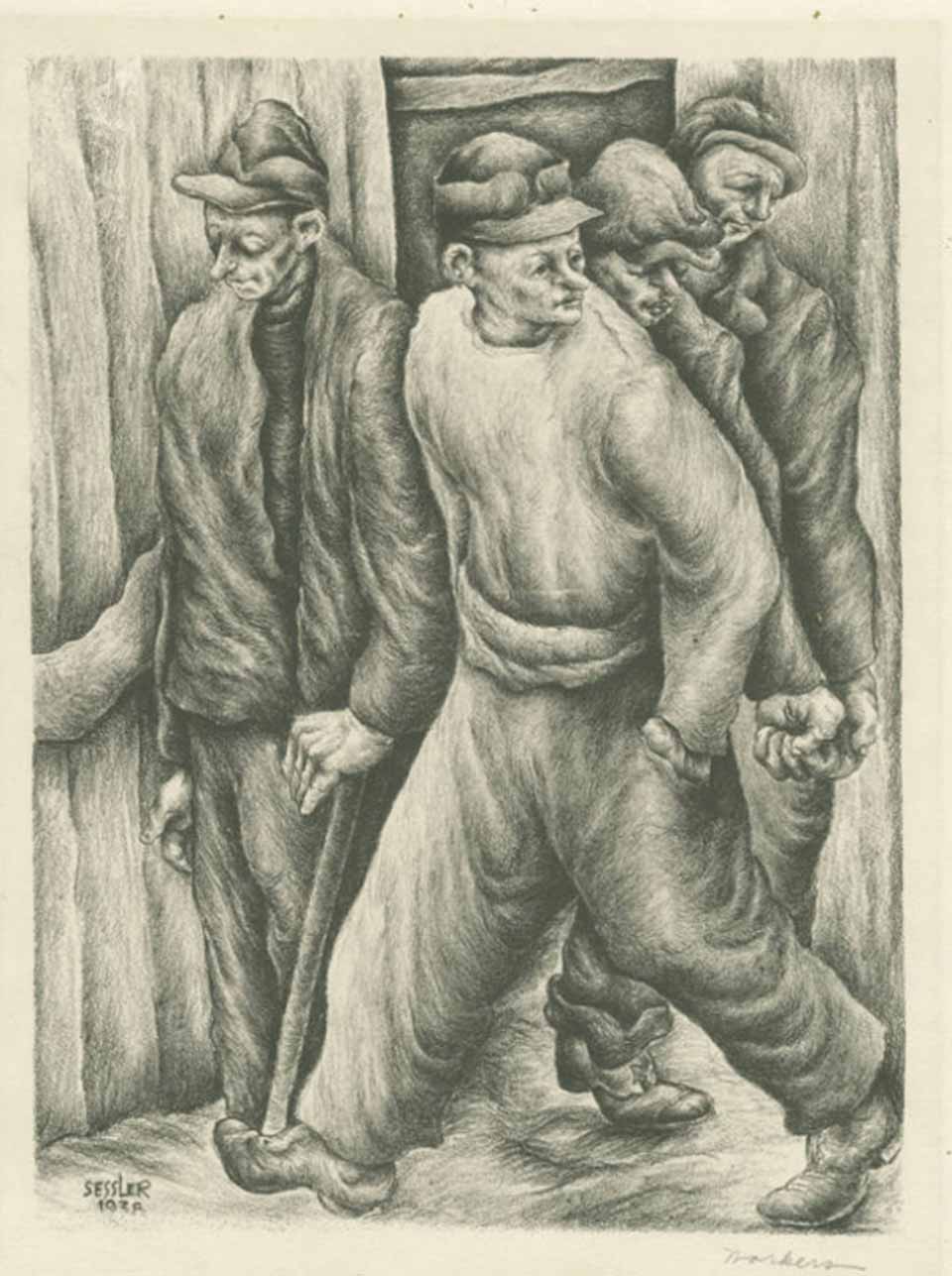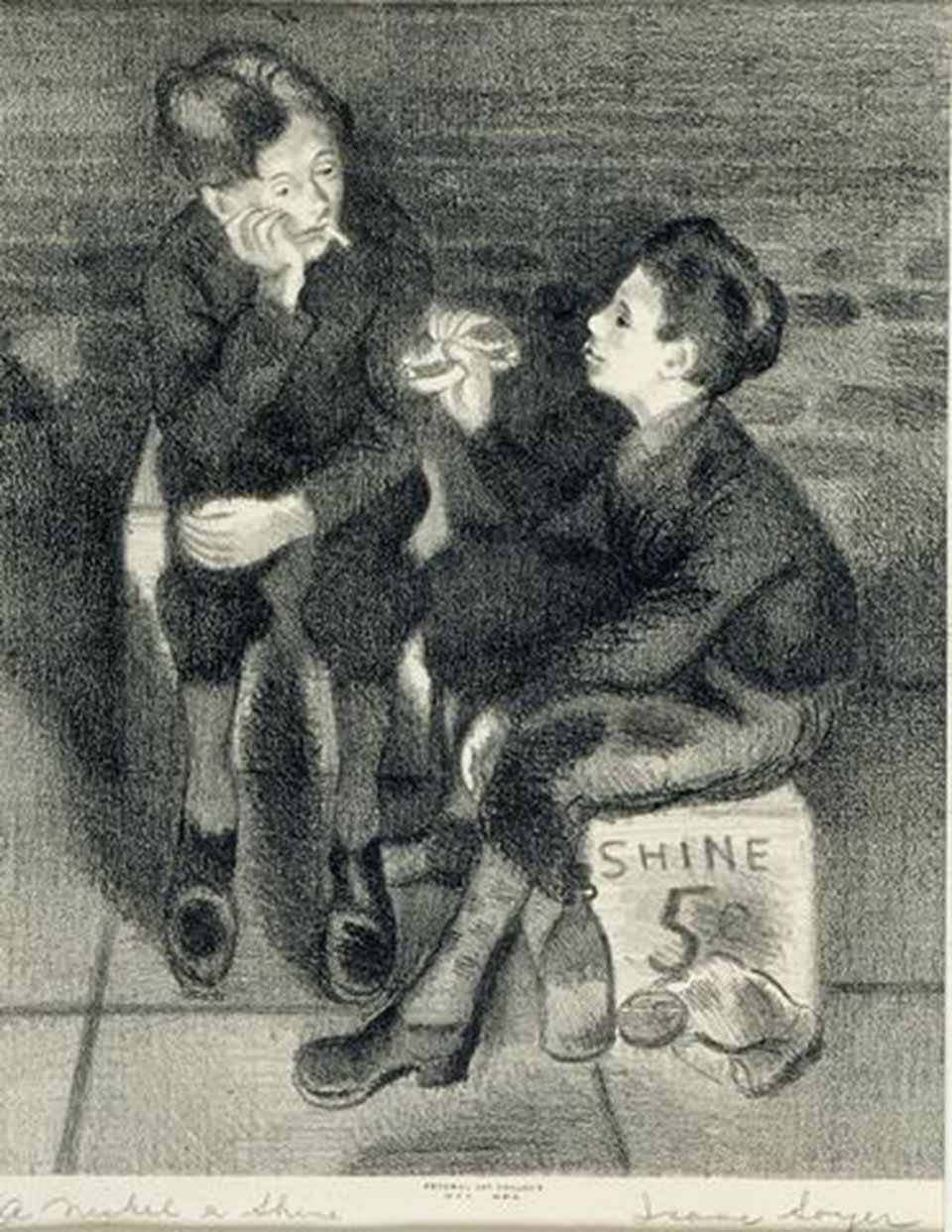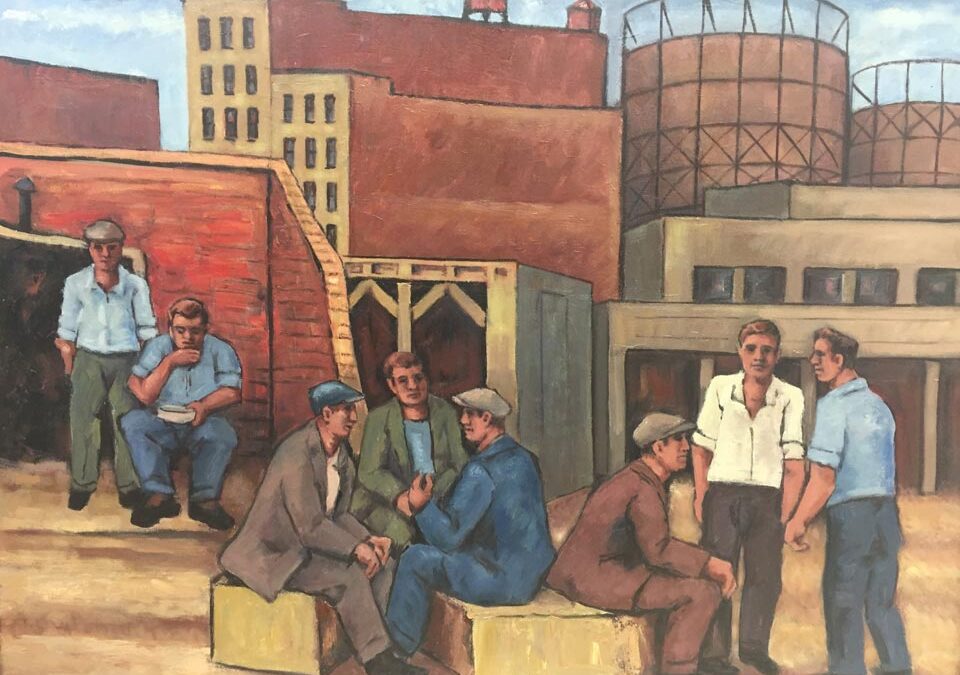Hooverville Depression Scene by Max Arthur Cohn. Oil painting, 1938. UWM Art Collection and Mathis Art Gallery. Gift of Jane Cohn Waldbaum and Steven L. Morse. Photo credit: UWM Art Collection.

June 17 – September 5, 2021
The everyday worker, like the artist, is critical to national infrastructure. This comparison and connection are visually evident in one of the most devastating periods of US history – the Great Depression. The convergence of these notions and the artwork it generated by artists of diverse backgrounds, many of them Jewish, were part of the foundation for the establishment of the Works Progress Administration’s (WPA) visual arts arm, the Federal Art Project from 1935-1943.
The program employed 10,000 artists to create murals, paintings, sculpture, photography, graphic art, theater sets and posters. These artists created a vast body of public art to adorn civic and community spaces. While one of the project’s goals was to lift communal spirits, the somber mood of the country and the grit necessary to navigate the arduous conditions became innately depicted topics.
The struggles and hopes are familiar as the parallels to contemporary events and circumstances are all too apparent. Issues of socioeconomic inequity, cultural and racial divides and anti-immigration sentiments have amplified with unemployment rates during the pandemic matching Depression-era levels. Providing dialogue during unprecedented times, documenting everyday plights, and giving voice to the marginalized are at the heart of art’s purpose and what it means to be human.
Artists of disparate beliefs and upbringings participated in and were impacted by the WPA. Regionalism assisted in identifying an artist’s provenance – whether an urban backdrop depicting a neglected New York tenement, rustic midwestern farms, boats docked at coastal ports, or laborers hard at work in sundry settings. Featuring work by Jewish artists in local and regional collections, this exhibit will explore individual and collective contributions and their WPA-Federal Art Project legacies.
An originally curated Jewish Museum Milwaukee exhibit. From local and regional private and personal collections.
Click here to plan your visit to see Brother, Can You Spare A Dime: Jewish Artists of the WPA.
Comprehensive virtual tours and creative workshops are available to support this exhibit. Contact Ellie Gettinger for more information.
Thank you to our generous exhibit sponsors: The Mary L. Nohl Fund and The Robert and Dolores Schlossmann Family Fund of the Greater Milwaukee Foundation, Isabel Bader, Anonymous Foundation*, Suzy B. Ettinger*, Linda and Eli Frank, In Memory of Dr. Herbert and Ruth Giller, Marjorie and Jonathan Margolies, Milwaukee Arts Board, Gerald and Louise Stein Family*, Harriet & Jerry Dorf*, Herbert Zien & Elizabeth Levins, Marquette University Department of History, Coalition for Jewish Learning, Jewish Community Relations Council, Tikkun Ha-Ir
*Donor Advised Fund of the Milwaukee Jewish Community Foundation
Media Sponsor: Wisconsin Public Radio

Workers by Alfred Sessler. Lithograph, 1938. Special Collections, University of Wisconsin-Milwaukee Libraries. Photo credit: UWM Special Collections.

A Nickel a Shine by Isaac Soyer. Lithograph, 1937. Illinois Legacy Collection, Illinois State Museum. Photo credit: Illinois State Museum.

